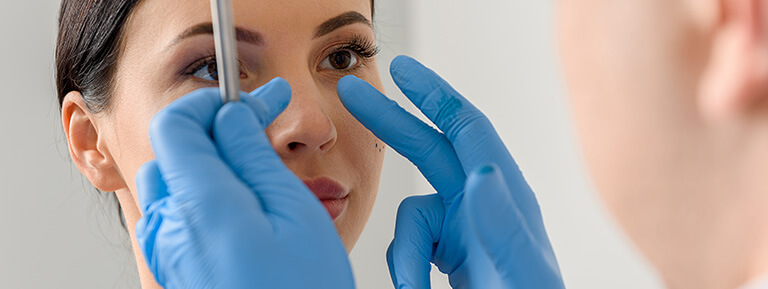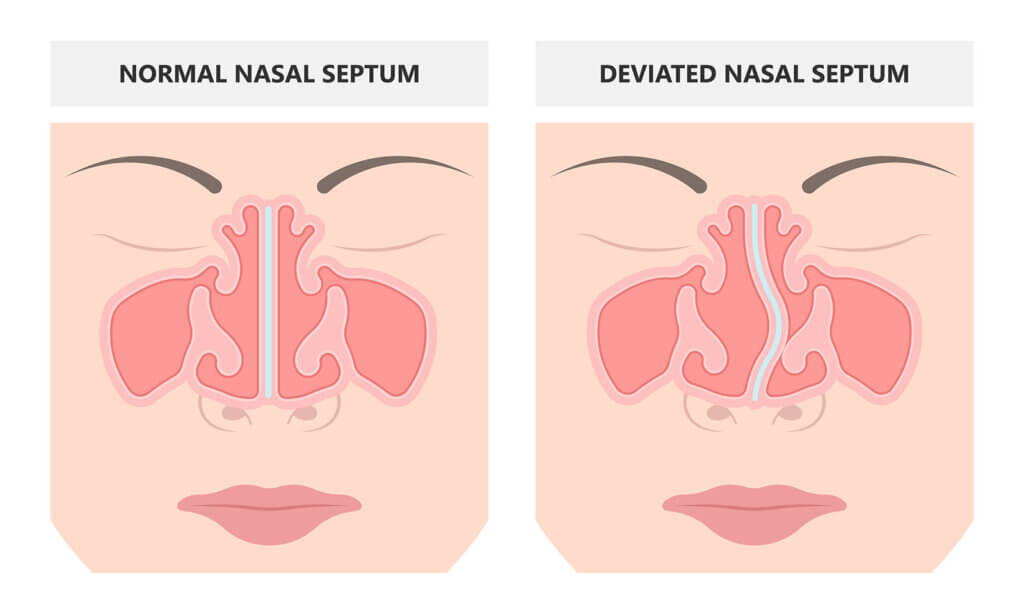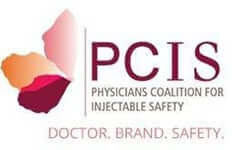
The term “nose job” often brings to mind images of celebrity transformations or dramatic changes in appearance. However, what many don’t know is that this term encompasses multiple procedures done on the nose area, each with its own purpose and benefits. Two of the most common types of “nose job” are septoplasty and rhinoplasty. If you’ve ever wondered about the difference between septoplasty and rhinoplasty, you’re not alone. These procedures, while both related to the nose, serve very distinct roles.
Rhinoplasty is typically what most people think of when they hear “nose job”—it’s the procedure aimed at enhancing the external appearance of the nose, making it more symmetrical or balanced with the rest of the face. On the other hand, septoplasty is less about aesthetics and more about functionality, primarily performed to correct a deviated septum and improve breathing.
So, if you’ve ever felt your nose was not quite right, either inside or out, knowing which procedure addresses which issues can be the first step towards a solution.
What is Rhinoplasty?
Rhinoplasty is a cosmetic surgery that dramatically transforms the appearance of the nose and, by extension, the entire face. By making precise adjustments to the nose’s size, shape, and symmetry, even subtle changes can create significant improvements in how the nose complements other facial features. This procedure isn’t just for celebrities; its accessibility and impactful results have made it increasingly popular among the general public. People choose rhinoplasty not only to enhance their appearance but also to boost their confidence, showing that a small change can make a big difference.
Reasons People Choose Rhinoplasty
Individuals opt for rhinoplasty for a variety of reasons, each looking to achieve specific aesthetic goals or to correct functional issues:
- Improving symmetry: Adjusting for a more balanced facial appearance.
- Reshaping the bridge: Smoothing out bumps or depressions.
- Refining the tip: Altering the tip to be less bulbous or more refined.
- Adjusting the size: Increasing or decreasing the overall scale to better fit the face.
- Correcting deviations: Straightening a crooked nose.
- Revising past surgeries: Enhancing or correcting previous nose operations.
Overview of Rhinoplasty
The rhinoplasty procedure is meticulously planned and executed to ensure that the changes are aesthetically pleasing and harmonious with the individual’s unique facial features. Here’s a detailed look at the procedure:
- Consultation and Planning: This initial stage involves discussing the patient’s goals, examining the nasal structures, and using imaging technology to plan the changes.
- Anesthesia: Depending on the extent of the surgery, rhinoplasty is performed under local anesthesia with sedation or general anesthesia.
- Incision Technique: The surgeon may opt for a closed rhinoplasty, where incisions are hidden inside the nose, or an open rhinoplasty, which involves an incision across the columella—the small strip of tissue between the nostrils—for more extensive adjustments.
- Reshaping the Nose: The surgeon reshapes the nose by altering the underlying bone and cartilage. This may involve removing material to reduce size, adding grafts to build up certain areas, or restructuring the cartilage for a new shape.
- Closing the Incisions: Once the desired shape is achieved, the skin and tissue are re-draped over the nose’s new framework, and the incisions are meticulously closed.
- Recovery: Recovery involves some swelling and bruising, with most patients returning to normal activities within a week or two, while full recovery and final results may take up to a year to fully manifest.
Each step of rhinoplasty is tailored to meet the specific needs and expectations of the patient, ensuring that the outcome not only improves appearance but also feels inherently natural.
What is Septoplasty?
Septoplasty is a surgical procedure focused on correcting a deviated septum, a common condition where the nasal septum—the bone and cartilage barrier that separates the nostrils—is misaligned. This surgery is crucial not for aesthetic reasons but for functionality, as it aims to improve airflow through the nose and enhance overall breathing. It’s a necessary treatment for those who suffer from chronic nasal congestion, sinus issues, or obstructive sleep apnea due to structural irregularities in their nasal passage.
Conditions Treated by Septoplasty
Septoplasty, also known as a functional rhinoplasty, addresses several conditions associated with a deviated septum, making it a vital medical procedure for many:
- Chronic nasal congestion and obstruction: Often, one nasal passage is significantly narrower than the other, causing difficulty breathing.
- Frequent sinus infections: Improper airflow can lead to recurring sinus issues.
- Nosebleeds: Increased pressure from blocked airways can cause frequent nosebleeds.
- Sleep problems, including snoring and sleep apnea: Restricted airflow during sleep can lead to more serious conditions like obstructive sleep apnea.
Overview of the Septoplasty Procedure
Septoplasty is straightforward but requires precision to ensure that breathing improvements are maximized without altering the nose’s external appearance. Here’s what the procedure typically involves:
- Consultation and Diagnosis: The surgeon will diagnose a deviated septum through physical examination and possibly imaging studies. Discussing symptoms and their impacts on quality of life helps tailor the procedure.
- Anesthesia: The surgery is usually performed under local or general anesthesia, depending on the extent of the deviation and the patient’s comfort.
- Incision and Correction: A small incision is made within the nostrils to access the septum. The surgeon then carefully reshapes the bone and cartilage, removing or repositioning it to clear the blockages and align the septum properly.
- Combination with Bilateral Turbinate Reduction: This procedure is commonly performed alongside septoplasty to enhance breathing efficiency. It involves reducing the size of the turbinates, which are essential nasal structures that regulate airflow and humidify the air you breathe.
- Closure: Once the septum is aligned, the incision is closed, and soft tissue is laid back in place. No external scarring is visible as all incisions are inside the nose.
- Insurance Coverage: Septoplasty, particularly when undertaken for functional improvements such as correcting a deviated septum, is typically covered by health insurance. This coverage can significantly reduce the financial burden for patients.
- Recovery: Recovery from septoplasty is generally quick, with most patients experiencing improved breathing soon after the swelling subsides. Full recovery can take a few weeks, during which strenuous activities should be avoided.
Choosing Between Septoplasty vs Rhinoplasty: Which Procedure is Right for You?
When considering a nose job, it’s essential to understand not just the differences between septoplasty and rhinoplasty but also how they can complement each other depending on your needs. Often, the reasons behind a desire or need for nasal surgery—whether for functional or cosmetic reasons—can be interconnected. For instance, someone might notice that their nose looks crooked or off-center, which could also be the cause of breathing difficulties due to a deviated septum.
Understanding the Connection Between Form and Function
In many cases, visible irregularities such as a bump on the bridge or a crooked nose are not merely cosmetic concerns but can also indicate underlying structural issues. Thus, understanding what you hope to achieve and discussing these goals with a qualified surgeon will guide you toward the right procedure:
- Functional Improvement (Septoplasty): If your primary concern is improving airflow, reducing nasal congestion, or correcting other symptoms caused by a deviated septum, septoplasty is the appropriate choice.
- Aesthetic Enhancement (Rhinoplasty): If you want to improve the aesthetic appeal of your nose by changing its shape, size, or overall appearance, rhinoplasty may be the right procedure for you.
Combining Procedures: Septorhinoplasty
For many patients, addressing both functional issues and cosmetic concerns in one surgical session can be the most efficient and effective solution. This is where septorhinoplasty comes into play—a combined procedure that corrects the internal alignment of the septum while also enhancing the external appearance of the nose.
When and Why to Consider Septorhinoplasty
- Simultaneous Correction: Septorhinoplasty is ideal for patients who have both cosmetic deformities and a deviated septum. This procedure reduces the need for multiple surgeries and combines recovery times.
- Holistic Approach: Combining the procedures allows for a holistic approach to nasal corrections, ensuring that the nose not only looks better but also functions better.
Benefits of Addressing Both Functional and Cosmetic Issues Simultaneously
- Improved Breathing and Aesthetics: Patients benefit from an improved nasal structure that supports better breathing and a more balanced, symmetrical nasal appearance.
- Cost-Effective: Undergoing both procedures at once can be more cost-effective than having them separately.
- Single Recovery Period: Patients go through a single recovery period, which is often easier to manage than recovering from two separate surgeries.
The Bigger Picture: How Nasal Surgery Can Transform More Than Your Looks
When considering a “nose job,” many people may not realize that there is much more to this procedure than meets the eye. Far from being purely cosmetic, nasal surgeries like septoplasty and rhinoplasty can significantly enhance both the function and the appearance of the nose. This dual potential makes choosing the right procedure—and the right surgeon—critical to achieving the best outcomes for both health and aesthetics.
At Gulf Coast Facial Plastics, Dr. Daniel Daube is the expert you need to navigate these decisions. As a double Board Certified and Fellowship-trained Facial Plastic Surgeon with a foundational background as a Head & Neck Reconstruction Surgeon and ENT specialist, Dr. Daube is uniquely qualified. His expertise allows him to expertly address both the visible and the vital, underlying aspects of nasal health.
With Dr. Daube’s comprehensive approach, patients receive care that meticulously targets their specific needs, whether they seek cosmetic refinement, functional improvement, or both. If you’re exploring the possibility of nasal surgery and are curious about what it can achieve for you, we invite you to schedule a consultation with Dr. Daube at Gulf Coast Facial Plastics. Discover how our specialized care can help you achieve not just a new look but a new lease on life.


 (850) 784-7722
(850) 784-7722




